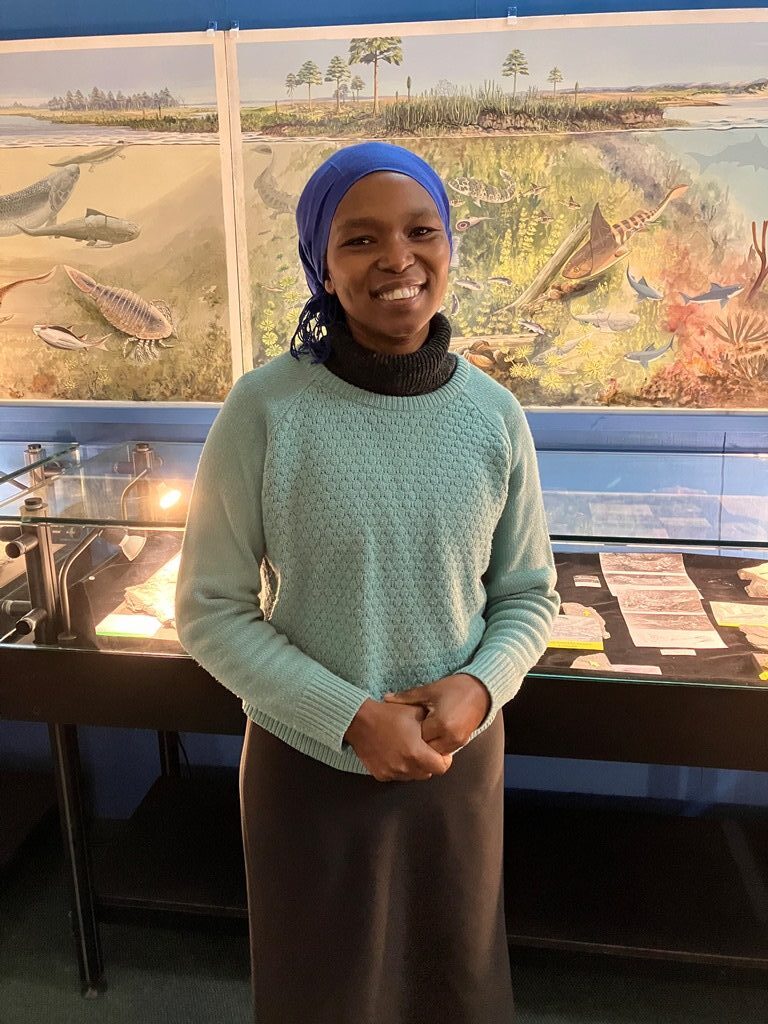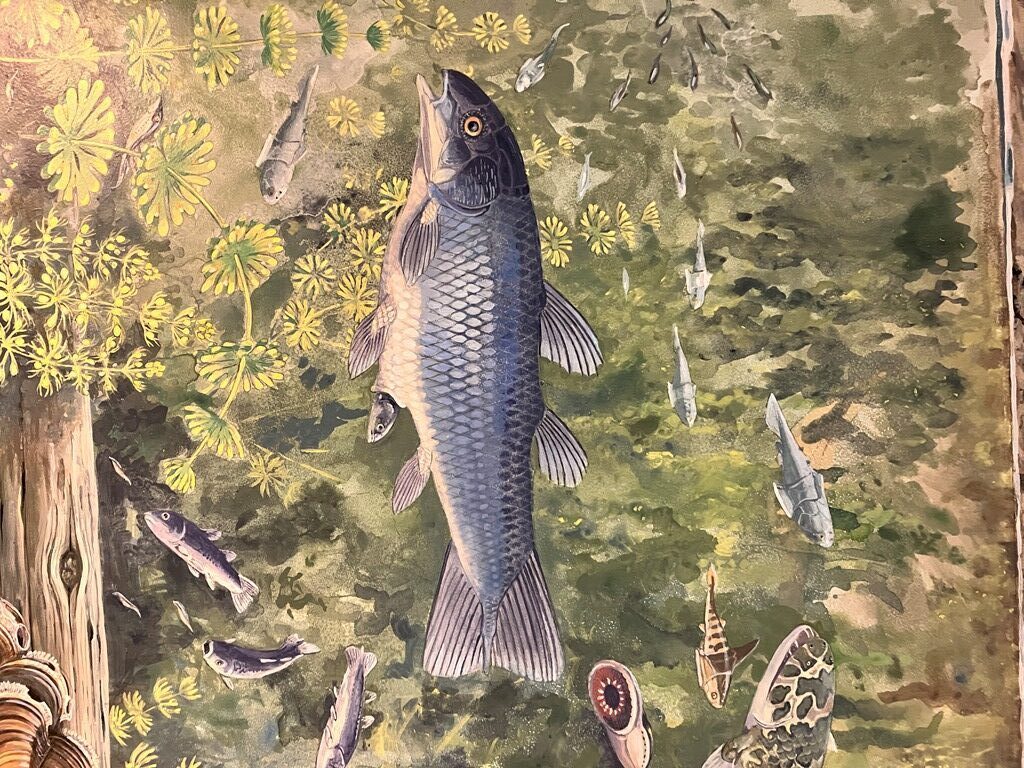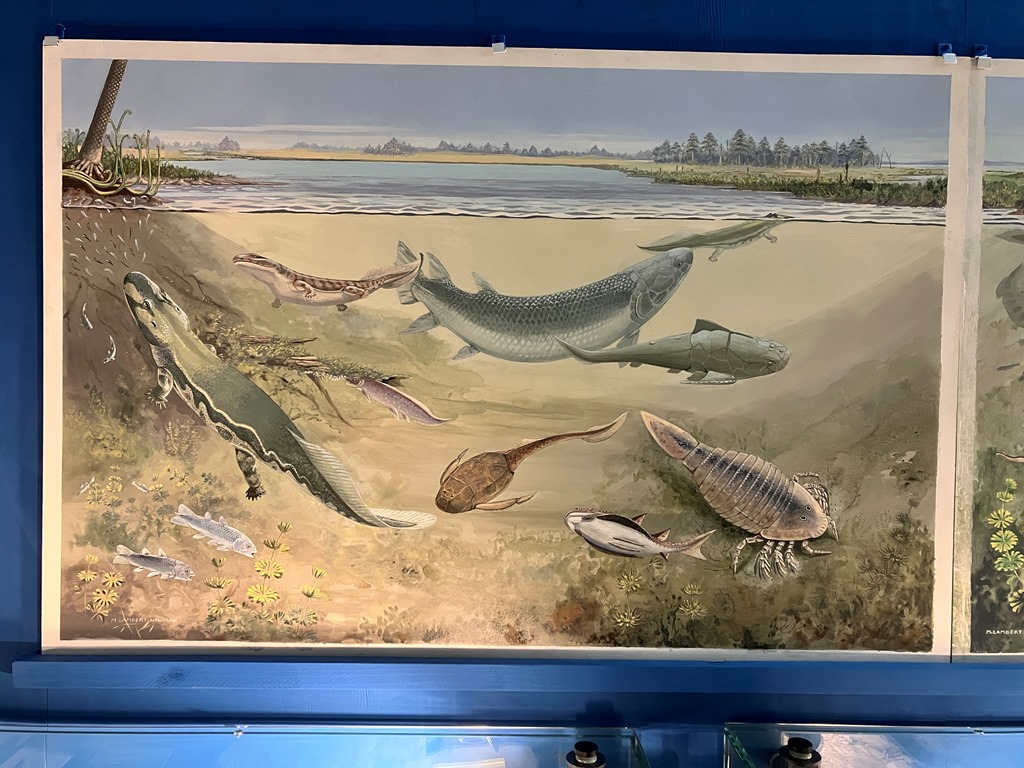By Steven Lang
The oldest treasures on display during the National Arts Festival are about 360 million years old – more than 100 million years older than the first dinosaurs. The Albany Museum invites visitors to Makhanda to learn about South Africa’s Devonian fossil heritage at the Devonian Ecosystem Project – free of charge. The gallery is housed in a building separate from the main museum, near Victoria Primary School.
The Project studies fossil treasures that cannot be found anywhere else on earth. These include lampreys, tetrapods, coelacanths, scorpions, various plants and extinct fishes.
All these fossils were found in exceptional shale deposits at Waterloo Farm only one and a half kilometres from the gallery itself.

Khokela Camagu, Outreach Officer at the Devonian Ecosystem Project, says that during Festival the museum will be inviting members of the public to come in and see the fossils as well as a number of beautiful paintings depicting life in the lagoon that once occupied this area.
Camagu said the paintings were done by Maggie Newman, “She’s been doing her work for a long time. Now, she is retired. She’s almost 80 and her work is still spectacular. She works very closely with Dr Gess, liaising with him to ensure that the paintings are scientifically accurate.”
Some of the most interesting creatures shown are ancient tetrapods, four-legged animals that scientists believe are ancestors of amphibians, reptiles, birds and mammals, including human beings.
Camagu says, “A tetrapod is a creature that evolved from lobe-finned fishes. They evolved limbs and they have vertebra. These Devonian ones are said to be our ancestors, because they are the first creatures to evolve limbs, to walk and were able to breathe outside water. But they still retained their gills, so they could breathe outside water and still live in water as well”.

The fossils at the Project are from the oldest tetrapods anywhere in Africa.
Head of the Devonian Ecosystem Project, Dr Rob Gess, explains, “We’ve been able to reconstruct the most complete, latest Devonian estuary, in fact the most complete Devonian tetrapod-inhabited environment anywhere in the world.
“Because of the special preservation in the rocks outside Makhanda, we have preservation even of soft tissues. So we have waterweeds, we have sea weeds and we have a whole range of different kinds of fishes”.
Gess speaks enthusiastically about placoderms, or armour-plated fish, that dominated the world’s oceans during the Devonian Period. “They had armour-plating covering their whole head down to their waist. And their heads and waist armour articulated with two little ball and socket joints”.
The shale found on Waterloo Farm was deposited about 360 million years ago, just a short time (in geologic terms) before the Devonian Period came to an end in one of the five great extinctions.
Gess says that trees found on Waterloo Farm helped explain what might have caused the end Devonian extinction.
The first trees began to grow in the later part of the Devonian Period (from 385 to 360 million years ago). Palaeontologists had evidence of trees in the tropical regions, but they were not sure about the spread of plant life into sub-tropical or polar regions.
Fossil plants found in the Waterloo deposits showed that at that time trees had spread right around the globe even to this estuary in the south of Gondwana which was in the Antarctic Circle at that time.
Gess explains, “When we found trees right outside Makhanda, we realised that trees had actually spread throughout the world. That actually influenced the development of the main theory about the end Devonian extinction”.
“Which is that the spread of these first trees had the opposite effect of – what we’re looking at now, the greenhouse effect – it brought on an ice-house effect”.
Trees absorb a lot of carbon dioxide which causes a cooling effect on the global climate, and ever since then “we’ve lived in a forest mediated environment. But some of the evidence for that comes from this fossil site, here in Makhanda”.
Visitors to the Festival should try to spend time at the Devonian Ecosystem Project – it is really worth the effort. The exhibition is at an Albany Museum satellite building on Beaufort street, next to the Glennie Hall at Victoria Primary School. (To get a pin put ‘Devonian Ecosystem Project’ into Google Maps).



